Understanding the intricacies of supply chain management can be a daunting task for businesses, especially when it comes to the concept of MOQ. This guide to minimum order quantities aims to demystify MOQ, highlighting its significance, calculation methods, and the benefits it offers to both suppliers and buyers.
What Does MOQ Mean?
MOQ stands for minimum order quantity. It is a term that resonates deeply within the realms of manufacturing, retail, and supply chain management. At its core, MOQ represents the smallest quantity of a specific product that a supplier is willing to sell to a buyer per order. This seemingly simple concept carries profound implications for both suppliers and buyers, influencing production strategies, pricing models, and inventory dynamics.
For suppliers and manufacturers, the establishment of an MOQ is not arbitrary. It’s a carefully calculated figure derived from a myriad of factors. One of the primary reasons for setting an MOQ is to ensure the economic viability of production runs. Producing goods often involves fixed and variable costs. Fixed costs, such as machinery setup or initial raw material procurement, remain constant regardless of the number of units produced. Variable costs, on the other hand, fluctuate based on the volume of production. By setting an MOQ, suppliers ensure that they produce enough units to spread out the fixed costs, thereby achieving a cost-per-unit that makes the production run profitable.
Moreover, MOQs can also serve as a safeguard against volatile market demands. By ensuring a consistent minimum order, suppliers can forecast their production needs more accurately, leading to better resource allocation and reduced wastage.
Why Implement MOQ?
Implementing an MOQ can be beneficial for several reasons:
- Inventory Management: By setting a minimum number of units, suppliers can better manage their inventory, ensuring they don’t overproduce or underproduce.
- Cost-Effective Production: Producing in bulk often reduces the cost per unit. An MOQ ensures that suppliers produce a sufficient quantity to achieve economies of scale.
- Predictable Revenue: Suppliers can forecast their revenue more accurately when they have a clear idea of the minimum number of products they will sell.
- Reduced Operational Complexity: With an MOQ in place, suppliers can streamline their production processes. They can plan their manufacturing cycles more efficiently, reducing the complexities associated with frequent changeovers or setups for different products.
- Enhanced Supplier-Buyer Relationships: MOQs can foster stronger relationships between suppliers and buyers. When buyers commit to purchasing a minimum quantity, it demonstrates trust and commitment, which can lead to better terms and collaboration in the future.
- Risk Mitigation: MOQs can act as a buffer against market volatility. By ensuring a consistent order volume, suppliers can protect themselves from sudden market downturns or unpredictable demand fluctuations.
- Improved Cash Flow: With a guaranteed least order quantity, suppliers can anticipate a steady inflow of cash, aiding in financial planning and reducing the need for external financing or loans.
How to Calculate Minimum Order Quantity?
Here’s a step-by-step guide to calculating MOQ:
1. Analyze Fixed and Variable Costs:
– Fixed Costs: These are costs that remain constant regardless of the production volume, such as machinery setup, rent, and salaries.
– Variable Costs: These fluctuate based on production volume and include costs like raw materials, utilities, and direct labor.
– Determine the break-even point where the total revenue from selling goods equals the total cost of producing them.
2. Evaluate Storage Capacity:
– Assess the storage facilities available. Overstocking can lead to increased storage costs and potential wastage, especially for perishable goods.
– Determine the optimal inventory turnover that can be stored without incurring additional costs.
3. Forecast Demand:
– Use historical sales data, market trends, and any other relevant information to predict future demand.
– Consider seasonal fluctuations, upcoming marketing campaigns, or any external factors that might affect demand.
4. Gauge Buyer’s Purchasing Capacity:
– Understand the average order value of your target market or primary buyers.
– Consider offering tiered MOQs for different segments of buyers if applicable.
5. Factor in Lead Time:
– Determine the time it takes from receiving an order to delivering the finished product.
– A longer lead time might require a higher MOQ to ensure continuous supply, especially if demand is consistent.
6. Assess Supplier Constraints:
– If you’re dependent on third-party suppliers for raw materials, understand their MOQs and factor them into your calculations.
– Ensure that you can source the necessary materials in line with your MOQ without disruptions.
High Minimum Order Quantities vs. Low Minimum Order Quantities
When the order quantity is too high due to a high MOQ, it mandates buyers to acquire a substantial number of items to initiate an order. From the supplier’s perspective, this ensures a notable sales volume, which is advantageous. Yet, this high MOQ can be a stumbling block for startups or small businesses that don’t have the financial muscle to meet such demands. Conversely, a low MOQ provides buyers with greater flexibility, allowing them to order a minimum number of items without overstretching their budget. However, this might not yield substantial profits for suppliers. Therefore, setting up an MOQ that strikes a balance between a high MOQ and a low MOQ is crucial for businesses to effectively serve their target audience.
Benefits of Minimum Order Quantity
The benefits of implementing an MOQ are manifold:
- Optimized Inventory Levels: MOQ helps in maintaining the right inventory levels, reducing the chances of stockouts or overstock situations.
- Enhanced Cash Flow: With a guaranteed minimum order value, suppliers can ensure a steady cash flow.
- Reduced Production Costs: Producing in bulk, facilitated by MOQ, can lead to reduced production costs per unit.
Challenges with MOQ and How to Overcome Them
Here’s an elaboration on the challenges associated with MOQ:
1. Barrier for Small Businesses:
– For startups or small-scale businesses with limited capital, meeting the MOQ set by suppliers can be daunting. Such businesses might not have the financial capacity or storage space to accommodate large orders.
– Solution: Small businesses can engage in negotiations with suppliers to lower the MOQ or seek suppliers who cater specifically to smaller order sizes. Another strategy is to collaborate with other small businesses to pool orders and collectively meet the MOQ.
2. Risk of Overstocking:
– Meeting the MOQ might lead to situations where businesses have more stock than they can sell, especially if demand predictions are off-mark. Overstocking ties up capital consumes storage space, and can lead to increased holding costs.
– Solution: Businesses can invest in advanced demand forecasting tools and regularly review sales data to make more accurate predictions. Seasonal trends, market shifts, and historical sales data can provide valuable insights.
3. Reduced Flexibility:
– An established MOQ can reduce a business’s flexibility to adapt to sudden market changes. If a product’s demand drops unexpectedly, businesses might still be bound to order the minimum quantity.
– Solution: Regular communication with suppliers and flexible contract terms can allow businesses to adjust their orders in response to market dynamics.
4. Potential for Wastage:
– Especially relevant for perishable goods, meeting the MOQ can result in products expiring before they can be sold.
– Solution: For products with a limited shelf life, businesses can negotiate for a lower MOQ or seek suppliers who specialize in smaller batches.
Economic Order Quantity (EOQ) vs. MOQ
MOQ refers to the minimum quantity that a supplier is willing to sell, ensuring that they cover their production costs and maintain profitability. On the other hand, EOQ is a strategic formula used by businesses to ascertain the ideal quantity of inventory they should order, aiming to minimize associated costs. EOQ stands for economic order quantity. While MOQ can help suppliers guarantee a certain quantity in sales, ensuring stability and predictability, EOQ’s focus is on helping businesses achieve cost efficiency in their inventory management. Both concepts, though distinct, are integral in the supply chain, ensuring that order quantity can help streamline operations and optimize costs for all parties involved.
How to Choose the Right MOQ for Your Business?
Determining the minimum order quantity, or MOQ is a nuanced process that requires a deep understanding of various facets of your business. It’s not just about setting a figure; it’s about ensuring that the MOQ works effectively for both the supplier and the buyer. By comprehending your production costs, storage capacity, and the purchasing behavior of your target market, you can set an appropriate MOQ. An MOQ that’s too high might deter potential buyers, as they might not be willing or able to meet the minimum spend.
Conversely, an MOQ that’s too low could impact your profitability, making the venture unsustainable. Some businesses might opt for a more complex MOQ strategy to increase the average order value, ensuring that while the quantity might be lower, the overall spend by the buyer is higher. If a supplier feels that their MOQ is limiting their customer base, they might consider partnering with a supplier with a lower MOQ to cater to a broader range of clients. In essence, finding the right balance and setting an appropriate MOQ is crucial to ensure a harmonious relationship between suppliers and buyers, leading to mutual growth and profitability.
The Role of 3PLs in MOQ
Third-party logistics providers (3PLs) offer a wealth of expertise when it comes to managing MOQ requirements. The MOQ varies from one business to another, often influenced by factors such as production costs and market demand. For businesses with a low average order size, setting a high MOQ to break even might deter potential buyers. In such scenarios, the insights and services provided by 3PLs can be invaluable. By outsourcing logistics and warehousing operations to a 3PL, businesses can leverage their proficiency in inventory management and demand forecasting.
This ensures that the MOQ will likely be much more aligned with market dynamics and buyer behavior. Whether a business opts for a simple MOQ based on average order size or a more complex one that considers multiple variables, 3PLs can guide them in setting an MOQ that balances both profitability as well as a minimum threshold that’s appealing to buyers. Furthermore, with the support of 3PLs, businesses can efficiently handle purchase orders, ensuring that the set MOQ aligns with their logistical capabilities and market strategy.
Conclusion
In the intricate landscape of supply chain and logistics, the use of MOQ stands as a cornerstone that businesses must pay keen attention to. This concept acts as a mediator, balancing suppliers’ production capacities with the purchasing requirements of buyers. Some businesses require high MOQs to cover production costs and ensure profitability. Others balance high and low MOQs to serve diverse market segments. For buyers, meeting the MOQ is vital for smooth supplier relationships. Understanding and setting the right MOQ helps streamline processes. It also reduces unnecessary expenses and increases customer satisfaction levels.
Unlock seamless supply chain solutions with PhaseV – Reach out now!




